NOTTINGHAM’S ONLY INDEPENDENT
VOLUNTEER RUN HIV PEER SUPPORT GROUP

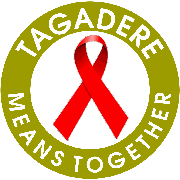
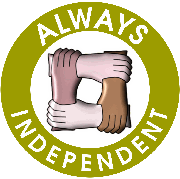
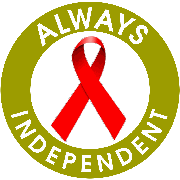
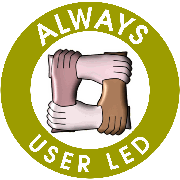
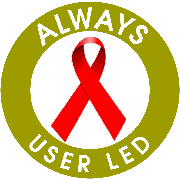
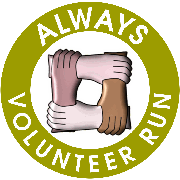
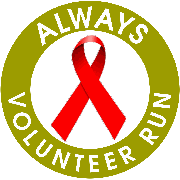
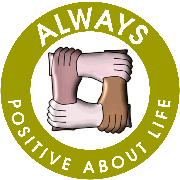
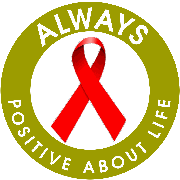
REGISTERED CHARITY 1129416


© Tagadere
Registered Charity 1129416



Positively Different
A research project about young adults’ experiences
of living with HIV in the UK
Liz Walker
Caroline White
Faculty of Health and Social Care
University of Hull
March 2017
Acknowledgements
Many people helped us in carrying out this research. We would like to extend our thanks to:
The HIV organisations who supported and publicised the research
The HIV, LGBT and other organisations, and HIV activists, who followed us on Twitter, and helped us to publicise the research
The people living with HIV who took part in the research, and who shared their experiences of diagnosis and living with HIV so openly.
We would like to thank you all; without your time and support this research would not have been possible.
Liz Walker
Caroline White
University of Hull
March 2017.
Introduction
This research sought to explore what it means for individuals to live with HIV at the present time.
There have been many changes in respect of living with HIV in the past 20 years (at least for people living in the global north). Medical research has moved at a swift pace to change HIV from a life threatening diagnosis to one which can be effectively treated and managed (especially if linked to early diagnosis). Thus, in the UK we live in an era where HIV can be treated and prevented, and, in many respects, it can be argued that HIV is now a ‘disease like any other’ (Moyer and Hardon, 2014; Mazanderani and Paparini, 2015).
However, in other respects there are indications that HIV may be a condition which continues to present very distinct challenges and characteristics in comparison to other long term conditions. Previous research has indicated that the experience of HIV diagnosis can be difficult and traumatic (De Santis and Boroso, 2011; Flowers et al, 2011; Tsarenko and Polonsky, 2011) and that stigma appears to be a significant and enduring feature of life with HIV (Berg and Ross, 2014; Moyer and Hardon, 2014; Hubach et al, 2015; Mazanderani and Paparini, 2015). The biomedical changes which have been achieved might be expected to have transformed the experience of HIV diagnosis and life with HIV over time. However, much HIV research includes people who have received a relatively recent diagnosis alongside those with an ‘historic’ HIV diagnosis, making it difficult to distinguish between the experiences of these two groups, and to identify to what extent (if any) experiences have changed over time. As HIV continues to be diagnosed in significant numbers (6095 people in the UK were newly diagnosed with HIV in 2015) (PHE 2016), an understanding of the specific experiences and challenges of those receiving an HIV diagnosis remains important.
This research was concerned with the question ‘is it different now’? We wished to explore what it means to receive and live with a diagnosis of HIV in a contemporary context, and to what extent, as the biomedical experience of living with HIV has shifted, the social experience has (or has not) changed and evolved. To help address this question the research explored the experiences of young people (aged 18-
How the research was carried out
The research was conducted via an online questionnaire which asked participants a series of mostly open ended questions about their experiences of diagnosis and living with HIV. The questionnaire included the following areas:
Experiences of diagnosis
Telling people
How people have been affected by HIV
Getting support
Social effects of HIV
Perceptions of whether HIV is the same or different to other long term conditions.
Participants could access the questionnaire via the Positively Different website which provided information about the study and what would be involved for those who took part. Further, it provided a list of support organisations, ensuring that participants could access sources of information and support if needed. The website provided a link to the questionnaire which was hosted by Bristol Online Surveys.
Online research was chosen for the following reasons:
It has the potential to reach people across a wide geographic area (Chiasson et al, 2006; Graffigna and Bosio, 2006), enabling the participation of people living with HIV from a range of areas. Much previous HIV research has focussed on London based populations; we sought to ensure that this study had a wide geographic reach and included participants from a wide range of communities and locations.
It can promote the involvement of otherwise hard to reach groups (Graffigna and Bosio, 2006; Tates et al, 2009).
It can enable participants to be in control of their involvement and the information they share. For example, some have suggested that, in comparison with face-
We do, however, recognise that there are some limitations within this methodology; specifically that online methods exclude people who do not have access to the internet or who are uncomfortable sharing information online (Chiasson et al, 2006). The online information about the research also indicated that if participants preferred to be interviewed that this could be arranged, and the researchers’ contact details were provided. Two participants contacted the researchers and arranged to be interviewed; one took part in a face-
Information about the research was made available to potential participants via HIV support agencies and social media. The researchers contacted a range of HIV support agencies across the UK and asked for their support in publicising the research, for example via their websites, newsletters or social media. Additionally, we set up Twitter and Facebook accounts for the study. We publicised the research regularly via Twitter and made contact with a range of HIV support agencies, LGBT support groups, HIV activists, sexual health clinics and services, and researchers with an interest in HIV.
People were invited to take part in the research if they were:
Aged between 18 and 35
Lived in the UK and had been diagnosed with HIV in the previous 5 years.
The survey was launched in September 2015 and ended in May 2016.
Survey participants
A total of 38 online responses were received; 1 could not be used in the analysis, because of duplication. Further, two people were interviewed for the research. Demographic information was collected about participants. This is reported in Table 1 below.
Table 1 – Online Participants’ Characteristics
Age
18-
23-
27-
31-
2.7%
21.6%
35.1%
40.5%
Ethnicity
White British
Other White Background
Black British
Other Black Background
Asian British
Other Ethnic Background
81.1%
8.1%
2.7%
2.7%
2.7%
2.7%
Area of the UK
England
London
North West England
North East England
Yorks and Humber
Midlands
South East England
South West England
Scotland
Wales
Northern Ireland
Missing data
75.6%
35.1%
5.4%
0.0%
2.7%
16.2%
8.1%
8.1%
5.4%
2.7%
13.5%
2.7%
Sexuality
Gay man
Heterosexual
Other (Queer)
Missing data
83.8%
10.8%
2.7%
2.7%
Gender
Female
Male
Other (Gender Queer)
10.8%
86.5%
2.7%
Time since diagnosis
In last month
In last 6 months
6 – 12 months
[one year or less in total]
1-
2-
3-
4-
2.7%
18.9%
18.9%
[40.5%]
13.5%
10.8%
13.5%
21.6%
The data summarised in Table 1 indicates that, overall, the majority of participants identified as Gay men, with limited participation from women or people identifying as heterosexual. These groups are frequently under-
What we found
We analysed all the information from the survey responses and the interviews, identifying some key themes. Although each participant had unique experiences, the analysis enabled us to identify some significant themes which are discussed below.
Diagnosis
Immediate experiences of diagnosis.
Many participants’ experiences of diagnosis were difficult and challenging and could be considered a point of crisis. Participants identified experiencing reactions which included shock, numbness, disbelief (although a small number reported that they were not surprised at their diagnosis), guilt, shame, anger and sadness. Despite the considerable medical advances which have been achieved in respect of the treatment of HIV, HIV diagnosis was experienced by many as a threat to their mortality, with some participants reporting a fear of dying or a belief they would die. A small number stated that they had experienced suicidal thoughts. Participants also reported experiencing fears prompted by their diagnosis; these included fears about death and dying; the future; medication and side-
The journey since diagnosis
While the immediate experience of diagnosis was often very difficult, participants’ initial feelings often, but not always, changed with time. Some described coming to terms with, or accepting, their diagnosis and carrying on with their lives, and appeared to feel confident and positive about living with HIV. However, for others, the changes to their feelings about living with HIV were more ambivalent, so that positive change co-
The findings in this section indicate that HIV diagnosis continues to remain an initially challenging and difficult experience for many, despite significant biomedical developments and positive public health messages. This, alongside the fears associated with death and dying reported by several participants, highlights the ongoing need for positive support and information at the time of diagnosis, to ensure that individuals better understand the implications of their diagnosis and their likely prognosis, and receive support in respect of the difficult emotions often prompted, at least initially, by diagnosis.
Disclosure and telling people
We asked participants about their experiences of telling people their HIV status. Table 2 below shows the range of participant responses.
Table 2 – Participants’ disclosure of HIV status
I have told no-
I have told 1 or 2 people 16.7%
I have told a few people 38.8%
I have told lots of people 36.1%
As can be seen from the above table, most participants had shared information about their HIV diagnosis with others, although the numbers of people they told varied. For many people, their decisions appeared to be made with careful consideration; participants noted that they told people on a ‘need to know basis’, and their decisions appeared underpinned by trust in those they informed, the reactions they anticipated and the closeness of their relationship. Some noted the importance of trusting that the person informed would keep information about their HIV status confidential. As in Flowers and Davis’s research (2012, 714) such individuals appeared to be engaged in ‘pre-
Most participants reported that those they had told had responded well and been supportive, although this was not a universal experience. This suggests that individuals’ decision making about who to tell, was based on astute and sound judgements. Although such careful decision making appeared to protect people from unwanted or unwelcome responses, decisions to restrict disclosure could also potentially include negative consequences; a small number of participants who had limited their disclosures reported a sense of living ‘a double life’ (Male participant, diagnosed 3-
Some people also highlighted potential romantic or sexual relationships as an area of concern. A number of participants reported experiences of rejection from potential partners once their HIV status was known. Knowing when to disclose to a potential partner was an area of uncertainty; a small number highlighted anxiety or avoidance in respect of forming new relationships due to fears about disclosing their HIV status.
Living with HIV
Experiencing change.
Participants described changes in their lives following HIV diagnosis. Some described positive changes which had occurred. These included making lifestyle changes and looking after their physical/emotional health. Further, some felt that HIV diagnosis had prompted personal growth and development, and perceived that living with HIV had made them a ‘better person’ (Male participant, diagnosed 6-
Emotional impact of living with HIV.
Participants’ responses highlighted the challenges that can be experienced following HIV diagnosis. Some identified that they felt positive about themselves, their lives and their ability to cope. However, others reported experiencing painful feelings such as anger, self-
Health and medical issues.
For many people, life with HIV involves taking daily medication. Some participants appeared quite ‘matter of fact’ about their treatment; ‘all I have to do is take a tablet once a day….so what’s the big deal’? (Male participant, diagnosed in the last 6 months). Others had experienced difficulties in respect of medication, for example experiencing initial side effects or negative reactions to medication, or health problems. Taking medication appeared an uncomfortable experience for some, serving, for example, as a regular reminder of their diagnosis, or requiring concealment from those they did not want to know about their diagnosis. The knowledge of living with a life-
Feelings about the future.
We asked participants how they felt about their future with HIV. Some reported feeling optimistic, excited and positive about the future; others identified significant worries and concerns. These included worries about future relationships and meeting a partner, or concerns about their long-
Is it different?
This study was concerned to explore whether, and how, the experience of diagnosis and life with HIV has changed as the health outlook and treatment for people diagnosed with HIV has evolved. We wanted to explore to what extent people now perceive HIV as ‘an illness like any other’. We therefore asked participants whether they believe that living with HIV is the same as living with any other long-
Some participants appeared to perceive HIV as ‘an illness like any other’ long term, chronic condition. However, the majority of participants did not wholly endorse this view. Many stated that, from a medical perspective, HIV has much in common with other chronic illnesses. However, they also perceived HIV to be set apart from many such conditions due to the associated stigma, and a general lack of sympathy towards those diagnosed with HIV, in contrast to those with other conditions. For example participants stated that:
‘The stigma around HIV is very different to something like diabetes. It’s acceptable to discuss that openly in any environment. With HIV people’s reactions are very different. We are a long way from HIV being viewed as just another long term chronic illness’ (Male participant, diagnosed 4-
‘When you are diagnosed with the virus, it isn't a death sentence, rather a life sentence of shame and ridicule from those that do not understand’. (Male participant, diagnosed 2-
Some respondents commented that, although the idea that ‘HIV is like any other chronic condition’ was in some respects reassuring, it also made it difficult to express deep-
‘I understand medically that some professionals compare living with HIV as the same as living with diabetes, however the stigma attached to HIV and the preconceptions people have I feel means this is not the case’. (Female participant, diagnosed 4-
I think there is a slight sympathy gap now… because it is so hidden, people don’t understand it, they don’t understand the impact. …. They minimise your experience and they, they kind of think that, you know, you’re fine, the drugs are okay, and you’ll be great (Male participant, diagnosed 3 years ago).
The opportunity to express anxiety and concerns in a context of biomedical development remains very important – it would be an ironic consequence of treatment success if the ongoing challenges of living with a stigmatised long term condition were overlooked.
HIV has long been closely associated with stigma (for example, Anderson and Doyal, 2004; Flowers et al, 2006; De Santos and Barroso, 2011; Hubach et al, 2015; Mazanderani and Paparini, 2015); therefore we sought to explore whether this remains a significant element of individuals’ experiences of living with HIV. As stigma has been an enduring part of the HIV narrative, we avoided asking participants directly about this, instead asking them about any social effects they had experienced in living with HIV.
Despite our concern not to ‘lead’ participants’ responses towards the familiar narrative by using the term stigma in our questions, it is interesting to note that stigma was mentioned frequently. It was not always clear whether participants had personal experience of stigma, or whether, they were aware of the associated stigma through the experiences of others or ongoing commentaries in respect of HIV. Some reported personal experiences of rejection, people joking about HIV, difficulties in respect of dating, isolation and loneliness. Some also commented that on disclosing their diagnosis, their ‘bravery’ was applauded, suggesting that HIV disclosure is still seen as risky and stigmatising. The frequency with which stigma was reported, suggests that this remains an enduring element of our understanding of the meaning and experience of life with HIV.
Discussion and concluding thoughts.
Our research indicates that contemporary experiences of diagnosis and living with HIV are varied and diverse. Participants’ experiences of life with HIV appeared to range from experiencing ongoing distress and devastation, to a sense that HIV makes little difference and that life can be continued as previously (or with the benefit of positive change). For many, the experience of living with HIV appeared to sit somewhere between these two extremes, as a condition that people, in many respects, lived with well, while also experiencing negative feelings or impacts:
“I have generally remained very strong and am mentally sound but I do have wobble days” (Male participant, diagnosed 2-
One notable finding is that, for many people, HIV diagnosis remains a difficult and distressing experience. Individuals do not necessarily appear prepared or supported by prior knowledge or understanding of the likely implications of such a diagnosis, as evidenced by the responses of those who associated HIV with death and fears of dying. This highlights a need for ongoing education in respect of HIV, and for appropriate support for people at the time of diagnosis, to ensure that they are aware of the treatment options available and the positive prognosis now associated with HIV. Moreover, it remains important that they receive support in respect of the emotional impact of diagnosis, which participants’ responses showed to be frequently challenging.
Another striking finding of the study is that perceptions and/or experiences of stigma appear to be an ongoing element of life with HIV. Although not universally reported, many participants observed that, while from a medical perspective HIV had much in common with other chronic, long-
Overall, the study findings highlight the potential for people diagnosed with HIV to live well with their condition (as many participants appeared to be doing). However, the difficulties and challenges reported by participants point to a need for ongoing support for those diagnosed with HIV, and for positive education in respect of HIV (and sexual health more broadly) which has the potential to benefit those who are diagnosed with HIV, both in respect of their own understanding of the condition, and in helping to ensure that those in their support networks are able to offer support, understanding and positive responses. In this context it is therefore concerning to note the impact of austerity measures on HIV support services across the UK, which despite demand for their services, are facing significant financial challenges, and in some areas the closure of services (Dalton, 2016; National AIDS Trust, 2017).
References
Anderson, J. and Doyal, L. (2004) Women from Africa living with HIV in London: a descriptive study, AIDS Care: Psychological and Socio-
Barchard, K. A. and Williams, J. (2008) Practical advice for conducting ethical online experiments and questionnaires for United States Psychologists. Behavior Research Methods, 40 (4), 1111-
Berg, R.C. and Ross, M.W. (2014) The Second Closet: A Qualitative Study of HIV Stigma Among Seropositive Gay Men in a Southern U.S. City. International Journal of Sexual Health, 26 (3), 186-
Chiasson, M.A., Parsons, J.T., Tesoriero, J.M., Carbello-
Dalton, A. (2016) Cutting the red ribbon? The current health of UK based HIV/AIDS organisations and the effects of austerity (2016).
De Santis, J.P. and Barroso, S. (2011) Living in silence: a grounded theory study of vulnerability in the context of HIV infection. Issues in Mental Health Nursing, 32 (6) 345-
Flowers, P., Davis, M., Hart, G., Rosengarten, M., Frankis, J. and Imrie, J. (2006) Diagnosis and stigma and identity among Black Africans living in the UK. Psychology and Health, 21 (1) 109-
Flowers, P., Davis, M.M., Larkin, M., Church, S. and Marriott, C. (2011) Understanding the impact of HIV diagnosis among gay men in Scotland: an interpretative phenomenological analysis. Psychology and Health, 26 (10) 1378-
Flowers, P. and Davis, M.D. (2012) Understanding the biopsychosocial aspects of HIV disclosure among HIV-
Graffigna, G. and Bosio, A.C. (2006) The influence of settings on findings produced in qualitative health research: a comparison between face-
Hubach, R.D., Dodge, B., Schick, V., Ramos, W.D., Herbenick, D., Li, M.J., Cola, T. and Reece, M. (2015) Experiences of HIV-
Loutfy, M.R., Sherr, L., Sonnenberg-
Mazanderani, F. and Paparini, S. (2015) The stories we tell: Qualitative research interviews, talking technologies and the ‘normalisation’ of life with HIV. Social Sciences and Medicine, 131 66-
Moyer, E. and Hardon, A. (2014) A Disease Unlike Any Other? Why HIV Remains Exceptional in the Age of Treatment. Medical Anthropology: Cross-
National AIDS Trust (2014) HIV: Public knowledge and attitudes. National AIDS Trust, London.
National AIDS Trust (2017) Why we need HIV support services. A review of the evidence. National AIDS Trust, London.
Public Health England (2016) HIV in the UK: 2016 report. Public Health England, London.
Tates, K., Zwaanswijk, M., Otten, R., van Dulmen, S., Hoogerbrugge, P.M., Kamps, W.A. and Bensing, J.M. (2009) Online focus groups as a tool to collect data in hard-
Tsarenko, Y. and Polonsky, M.J. (2011) ‘You can spend your life dying or you can spend your life living’: identity transition in people who are HIV positive. Psychology and Health, 26 (4), 465-